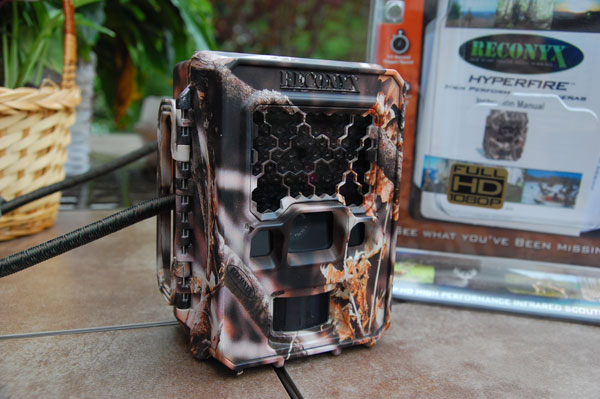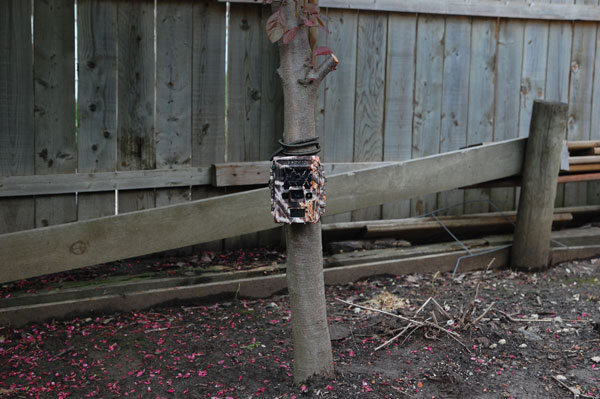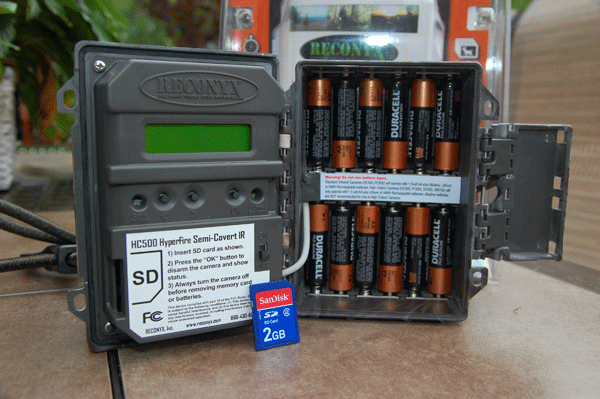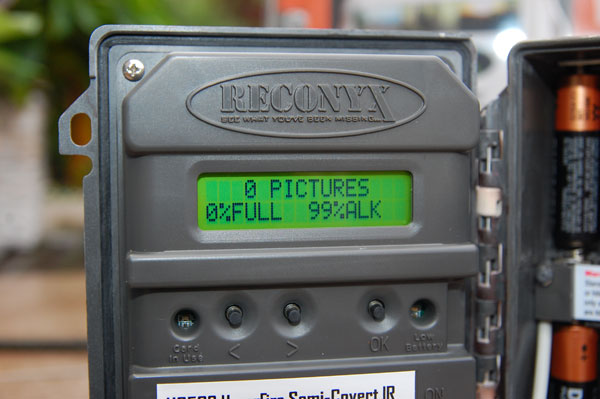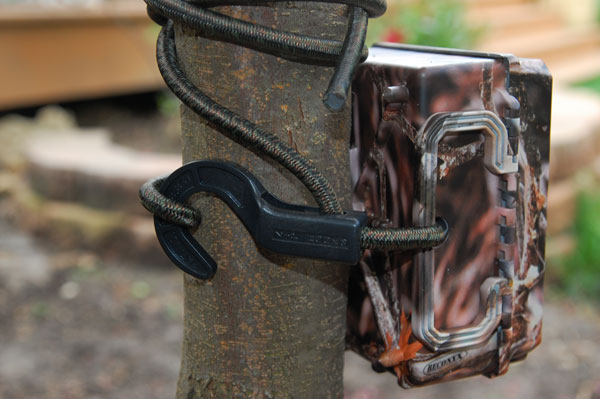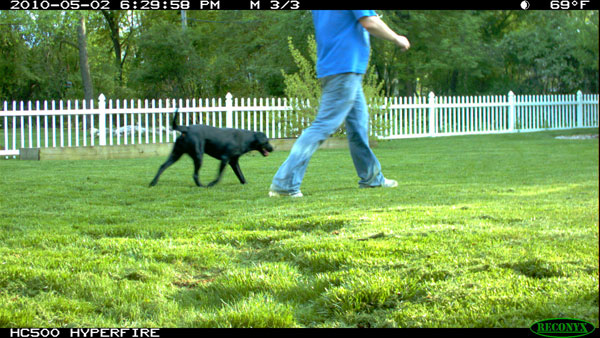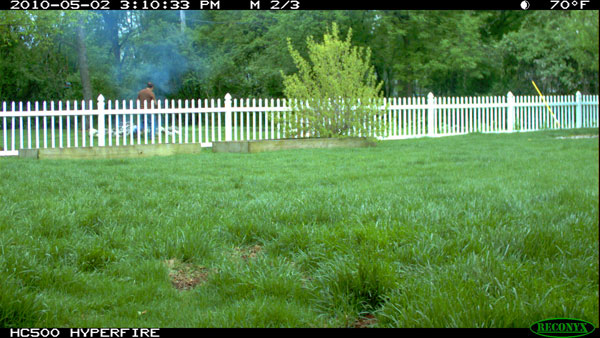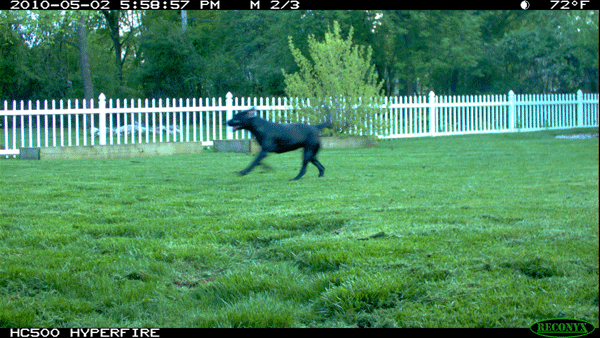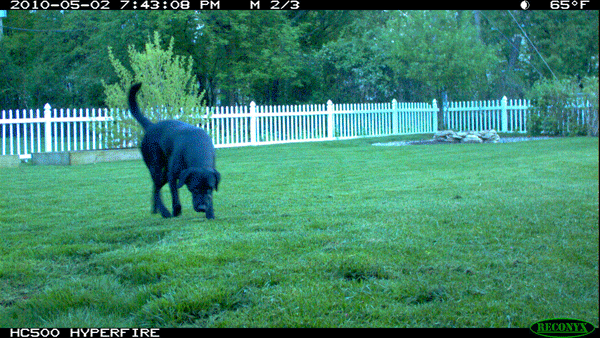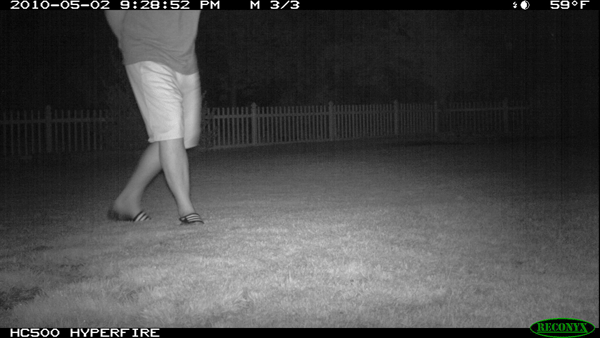LAST UPDATED: May 8th, 2015
In 2002 Reconyx burst onto the trail camera scene with a new line of trail cameras whose price tags caused a lot of jaws to drop. With many of the popular digital trail cameras selling for around $200 or less, the Reconyx line was nearly 3 times the price which raised a lot of eyebrows. However, over the next several years the new company proved that they were a force to be reckoned with. Incredible trigger speed, battery life, and reliabilty combined with the RapidFire technology made the RC55 and RC60 trail cameras two of the best options according to many trail cam enthusiasts.
Early in 2010 Reconyx announced it would be coming out with two new cameras, the HC500 and HC600. Both cameras would feature the same RapidFire technology that made the first cams so successful but in a smaller package with better battery life and a lower pricetag. Too good to be true? Not from what I can see.
My first shipment of HC500’s arrived late last week and I was eager to test one of them out to see how they compared to the older models. The first thing I noticed was the much smaller package of the HC500, which is a welcome change. You can fit a couple of these little guys in your pack and not even know they’re there. The smaller housing also makes them more difficult to spot, both by wildlife and potential thieves. Despite the new smaller size, all Reconyx units still come with a built-in carrying handle which is yet another great feature.
I’ve waited a few months to get my hands on one of these new Reconyx HC500 units. Let the fun begin!
The HC500 mounted to a small tree in my yard. The smaller size of this trail camera is great for situations like this.
Upon opening the unit you’ll notice right away that it uses AA batteries as opposed to the C cell batteries of the old units. The HC500 and HC600 both take 12, yes TWELVE, AA batteries. Reconyx recommends either Energizer Lithiums or NiMH rechargeables (which may be the smart option considering the cost of Lithiums). Of course all I had laying around were standard alkalines, which will work in the HC500 unit but are not recommended in the Hight Output units as they don’t have the same performance in hot or cold weather, or at night. According to the owner’s manual even with alkaline batteries the HC500 can still take 20,000 or more images. With a good set of Lithiums you can get as many as 40,000 images! In any case, for this test my Duracell Alkalines worked just fine. Combined with a 2 GB SD card I was ready to start my tests.
The HC500 with batteries installed and SD card ready to go. The SD card slot is very easy to access, which is very nice when you have gloves on during cold weather.
Without looking at the instructions (hey, I’m a guy) I popped in the batteries and the SD card, then fired the HC500 up. The first thing it did was ask me to program the date and time. Upon completion it let me know my card was empty and I was running on full battery life. Before I put the camera on a tree I stepped through some of the settings just to see how everything worked. There’s only a few buttons on these Reconyx units so they’re not too hard to figure out. You can adjust just about every setting you can think of from time between triggers to how many triggers the camera takes each time it’s triggered, sensitivity levels, and much more. Out of the box the Reconyx RC500 is set to take 3 images per trigger with a 1 second delay between images, and no delay between triggerings. I modified these settings to put the cam in RapidFire mode with 15 seconds between triggerings.
The LCD screen is bright and clear, both in the daylight and at night thanks to the new backlight (a huge improvement over the old units). With just 3 buttons to pick from setup is a breeze. Leave the HC500 on it’s default settings and you can be ready to start using it in seconds, even without reading the directions.
Once I got the camera hooked on a tree in my back yard with the included adjustable bungee, I put it into the “Walk Test” mode. This allows you to walk in front of the cam and see at which points you’re triggering a picture to be taken. This feature is great for making sure you’ve got everything lined up to cover the area you want. Once you’re satisfied with the camera’s position you can simply leave – 2 minutes without a motion trigger will arm the camera. This is great because you don’t have to go back to the cam and open it up, risking messing up your alignment, to arm it.
The adjustable bungee cord included with all Reconyx trail cameras works great on virtually any size tree. If you don’t want to use the bungee cord the new HC500 will accomodate a Master Python lock for added security (sold separately).
Here’s the results of my afternoon testing: 148 triggering events took 444 photos over just a couple hours. I did have a few blank images, but generally they were on photos #2 or #3 in the sequence when the target was moving at a pretty good pace. Just a note: I put my test cam much lower than I normally would as I was using my dog for a test subject. She’s only about 50 lbs and stands about 1/2 the height of a whitetail doe, so I figured this would give me a more realistic scenario. As you’ll see in the pictures below the Reconyx RC500 stamps the date, time, moon phase, temp, and photo # on each picture. You can also personalize the message on the bottom of the image, but I was in too much of a hurry to play around for that today.
By default the HC500 takes still images in 1080P resolution (which technically is a video resolution, not a still image resolution, but I guess that’s marketing for ya). What this means for you is that the images are 3008×2000 pixels, which is plenty big to blow up and look at those little kickers on the bases of the buck you’re chasing. If you want to print an image out the print size will be roughly 10″x6″, which is pretty good. The images below have been reduced to 600×399 to fit on the screen, which is 1/5 the size of the original.
In this first photo you can see there’s still good light and the color saturation is great. We are roughly 15 feet from the camera at this point. As you can see this is triggering #3 of the sequence. The nice thing about the RapidFire is that if the subject is slowly moving in front of the cam you are almost guaranteed to get at least one great photo that is centered and exactly what you’re looking for.
In this photo you can see my neighbor in the brown shirt behind the fence tending to his Sunday afternoon fire. He is approximately 70 feet away from the camera at this point. I captured a ton of photos of him over the course of the day, which is pretty impressive. The sensitivity on this camera is excellent.
As with all digital trail cameras I’ve ever used, you still have some motion blur on daylight photos where the subject is moving at a fast pace. This is just the nature of the beast when trying to keep the shutter open long enough to get good light. Not as bad as some trail cameras I’ve used, but not great either.
Here’s a good example of a low light photo from the HC500. You can’t tell as much in this scaled down version, but there is quite a bit of noise/grain in this image. Again, it’s just the nature of the beast for digital cameras and its not as bad as I’ve seen on other cameras like my Cuddeback Capture which is good to see.
The last photo is me coming at night to check the “low-glow” IR technology. A lot of people always ask us about the red “flash” spooking deer. I’m here to tell you that unless you’re looking right into the flash on these cameras you’re not even going to notice it going off. Even knowing the camera was there I almost missed the IR flash as it was so dull and so quick. Because the cam is so low on the tree a lot of the grass in front of me absorbed the flash, but the brightness and clarity look pretty good to me. You can easily make out my feance in the background which is about 50 feet away.
All in all I’m very impressed with the Reconyx RC500 trail camera. This cam is incredibly easy to set up, the trigger speed is great, photo clarity is good, and the RapidFire technology still amazes me. With a price tag now just over $400 the HC500 is still pretty pricey, but if you’re tired of blank images, dead batteries, and unreliable trail cameras it may be time to consider a Reconyx. I know I am!
Be sure to check the Bowhunting.com shopping cart over the next couple of days as these new trail cameras become available for purchase.

